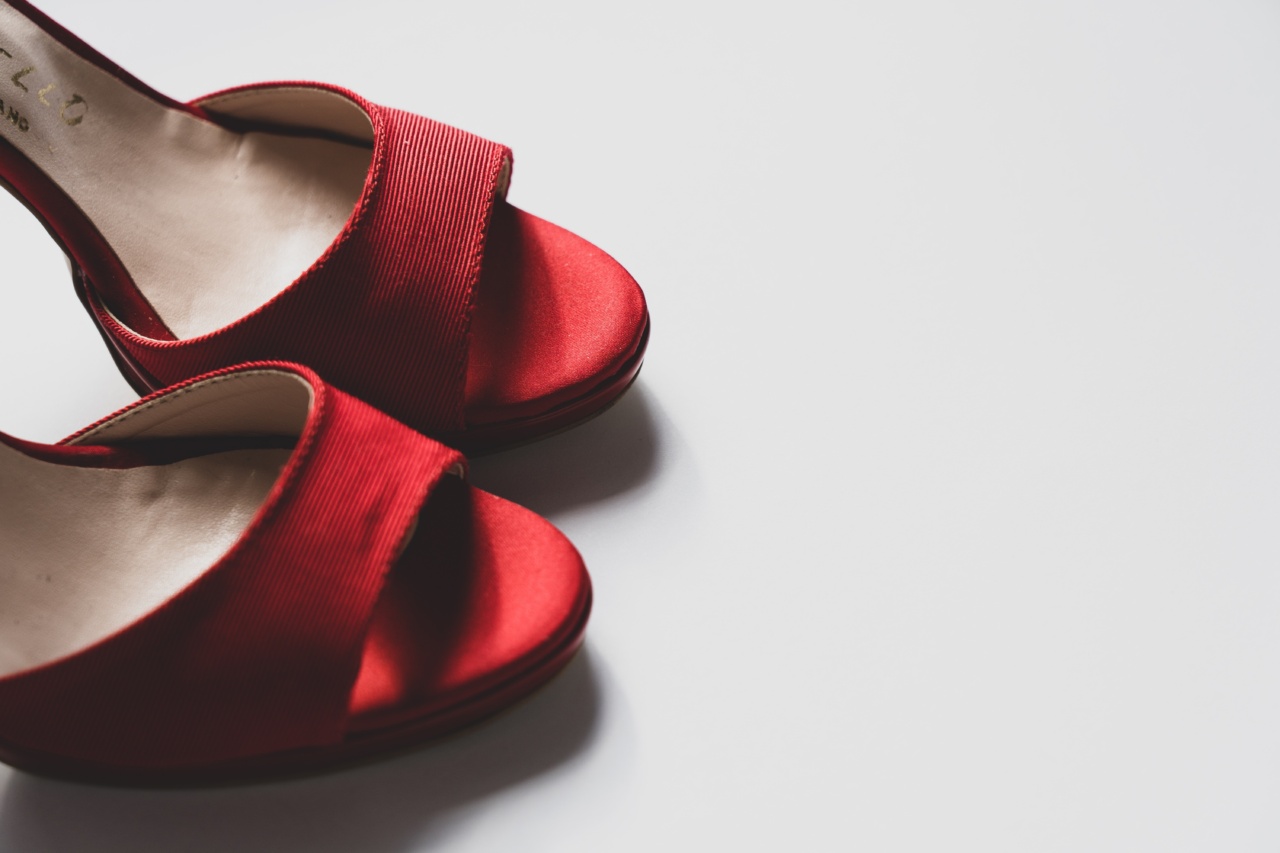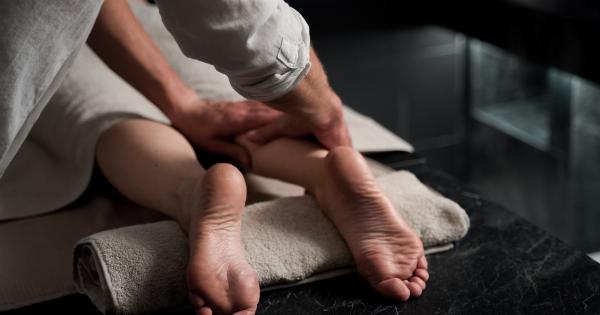High heels have a way of elevating your outfit to chic and fashionable, but they can also be harmful to your feet.
Wearing high heels regularly can lead to a variety of foot problems, ranging from blisters and calluses to foot pain and even more serious injuries like sprains and stress fractures. Unfortunately, many women are hesitant to give up their high heels in favor of more comfortable footwear. Fortunately, there are several hacks you can use to safeguard your feet while wearing high heels regularly. Here are 30 of them:.
1. Invest in Quality High Heels
When it comes to high heels, quality matters. Cheap, poorly made high heels can cause more harm than good, as they are often uncomfortable or downright painful to wear, and they can also cause blisters, calluses, and other foot problems.
Invest in a pair of high-quality high heels made from quality materials. Look for shoes made with real leather or suede, as these materials will stretch and mold to your feet over time, making them more comfortable to wear.
2. Choose the Right Size
Choosing the right size of high heels is critical to keeping your feet safe. Make sure to measure your feet regularly, as your shoe size can change over time, especially if you have had children or have gained or lost weight.
Try on shoes in the afternoon or evening, as your feet naturally swell throughout the day. When trying on shoes, make sure to walk around in them and check that your toes are not cramped and your heels are not slipping out.
3. Add Cushioning Inserts
High heels can be hard on your feet, but adding cushioning inserts can help. There are many different types of inserts available, including gel pads, foam pads, and even memory foam.
Look for inserts that are specifically designed for high heels, as these will provide the most comfort and support. Inserts can also help reduce the impact of each step, which can help prevent foot injuries like stress fractures.
4. Stretch Your Feet and Ankles
Before putting on your high heels, take a few minutes to stretch your feet and ankles. Stretching can help improve flexibility and reduce the risk of foot injuries like sprains and strains.
Try doing some gentle calf stretches by standing on the edge of a step and lowering your heels down below the step. You can also try rolling a tennis ball under your feet to massage the muscles.
5. Use Moleskin for Problem Spots
If you have areas of your feet that are prone to blisters or calluses, use moleskin to protect them. Moleskin is a soft, cushiony material that can be cut to size and attached to any area of the foot that is prone to rubbing or friction.
This can help prevent blisters and calluses from forming, and it can also help reduce pain and discomfort while wearing high heels.
6. Wear Foot Petals
Foot petals are small cushions that can be attached to the soles of high heels to provide extra comfort and support. They can be particularly helpful if you have high arches or if your feet tend to slide forward in your shoes.
Foot petals come in a variety of styles, including arch supports, heel pads, and ball-of-foot cushions.
7. Alternate High Heels with Flats or Low Heels
Wearing high heels every day can be tough on your feet. To give your feet a break and reduce the risk of foot injuries, alternate wearing high heels with flats or low heels.
This can also help prevent foot pain and discomfort, as your feet may become accustomed to wearing high heels all day.
8. Wear Shoes with a Wide Toe Box
High heels with a narrow toe box can cause cramping and discomfort in the toes. Opt for shoes with a wide toe box, which will allow your toes to spread out naturally and help prevent foot problems like bunions and hammertoes.
Look for shoes with a pointed toe that is not too narrow, or opt for shoes with a rounded toe for even more comfort.
9. Choose Shoes with a Lower Heel Height
The higher the heel, the more strain it puts on your feet. Opt for shoes with a lower heel height, which will be more comfortable to wear and less strenuous for your feet.
If you must wear high heels, choose shoes with a heel height of no more than two inches to reduce the risk of foot injuries.
10. Avoid Wearing High Heels on Uneven Surfaces
Walking in high heels on uneven surfaces can be dangerous, as it increases the risk of ankle sprains and other foot injuries. Avoid wearing high heels on uneven surfaces like cobblestone or gravel, and stick to smooth, flat surfaces whenever possible.
11. Wear High Heels for Short Periods of Time
If you must wear high heels, try to wear them for short periods of time, and take them off whenever possible. The longer you wear high heels, the more strain it puts on your feet, so try to limit your wear time to a few hours at a time.
12. Practice Good Posture
Walking in high heels can be challenging, but practicing good posture can make it easier. Stand up straight, with your shoulders back and your weight evenly distributed on both feet.
This will help reduce the strain on your feet and make it easier to walk in high heels.
13. Use Anti-Slip Shoe Pads
High heels can be slippery, which can increase the risk of falls and foot injuries. Use anti-slip shoe pads to provide extra traction and prevent slipping. These can be particularly helpful if you are wearing high heels on polished or smooth surfaces.
14. Choose Shoes with a Comfortable Insole
The insole of a shoe can make a big difference in how comfortable it is to wear. Look for shoes with a comfortable, well-cushioned insole that provides good arch support and shock absorption.
This will help reduce foot pain and discomfort while wearing high heels.
15. Walk on the Balls of Your Feet
Walking in high heels can be easier if you walk on the balls of your feet, rather than your heels. This will help distribute your weight more evenly and reduce the strain on your feet.
Practice walking on the balls of your feet at home before wearing high heels out in public.
16. Wear Shoes with Adjustable Straps
Shoes with adjustable straps can be helpful if you have narrow or wide feet. They can also help prevent your feet from sliding forward in your shoes, reducing the risk of foot injuries like blisters and calluses.
Look for shoes with adjustable ankle straps, as well as straps across the top of the foot.
17. Choose Shoes with a Stable Heel
Shoes with a stable, block or wedge heel are more comfortable to wear than shoes with a thin, spiky heel. The wider base of the heel provides more stability and makes it easier to walk in the shoes.
Look for shoes with a heel that is no more than two inches high, and opt for shoes with a broader heel base.
18. Use Foot Powder to Control Sweat
Sweating can be a problem when wearing high heels, as it can cause your feet to slide forward in the shoes. Use foot powder to help control sweat and reduce friction.
Sprinkle a little foot powder inside your shoes before putting them on, and reapply as needed throughout the day.
19. Keep Your Toenails Trimmed
Long toenails can rub against the inside of your shoes and cause discomfort and even pain. Keep your toenails trimmed short to prevent this from happening.
Make sure to trim your toenails straight across, rather than at an angle, to prevent ingrown toenails.
20. Practice Walking in High Heels
Walking in high heels takes practice, and the more you do it, the easier it will become. Start by practicing at home, walking around in your high heels until you feel comfortable and confident.
You can also try walking on different surfaces, including carpet, hardwood floors, and outside on the sidewalk.
21. Wear Shoes with a Platform Sole
Shoes with a platform sole can be more comfortable to wear than shoes with a thin sole. The platform sole can help distribute your weight more evenly and reduce the strain on your feet.
Look for shoes with a platform sole that is no more than an inch high.
22. Use Ice to Reduce Swelling
If your feet become swollen or sore from wearing high heels, use ice to reduce the swelling. Place a bag of ice or a cold pack on your feet for 15 to 20 minutes at a time, several times a day. This can help reduce inflammation and ease foot pain.
23. Wear Shoes with a Cushioned Heel
Shoes with a cushioned heel can provide extra comfort and shock absorption while wearing high heels. Look for shoes with a cushioned heel pad or a gel insert in the heel.
This will help reduce the impact of each step and prevent foot injuries like stress fractures.
24. Use a Shoe Stretcher
If your high heels are too tight or uncomfortable, use a shoe stretcher to stretch them out. A shoe stretcher is a device that can be inserted into the shoe to stretch it out and make it more comfortable to wear.
You can also use a spray stretcher, which is a spray that is applied to the inside of the shoe to stretch it out.
25. Carry Flats in Your Bag
If your feet become tired or sore from wearing high heels, carrying a pair of flats in your bag can be helpful. This will allow you to switch to flats when your feet need a break, while still looking fashionable and put-together.
26. Choose Shoes with a Rounded Toe
Shoes with a rounded toe can be more comfortable to wear than shoes with a pointed toe. The rounded toe allows your toes to spread out naturally, reducing the risk of foot problems like bunions and hammertoes.
Look for shoes with a gently rounded toe for maximum comfort.
27. Wear Shoes with a Non-Skid Sole
High heels can be slippery, especially on smooth or polished surfaces. Look for shoes with a non-skid sole, which will provide extra traction and prevent slipping. This can help reduce your risk of falls and foot injuries.
28. Choose Shoes with a Soft Lining
Shoes with a soft lining can be more comfortable to wear than shoes with a hard, scratchy lining. Look for shoes with a soft leather or fabric lining that will be gentle on your feet. This can help reduce friction and prevent blisters and calluses.
29. Avoid Wearing High Heels Every Day
Wearing high heels every day can be tough on your feet, so try to avoid it whenever possible. Save your high heels for special occasions or days when you will not be on your feet for long periods of time.
This will help prevent foot pain and discomfort, and reduce the risk of foot injuries.
30. Opt for Low Heels or Flats
If you want to be comfortable and safe while still looking fashionable, opt for low heels or flats. There are many stylish options available, from ballet flats to loafers to sandals.
Choose shoes that are comfortable and practical for your lifestyle, and you will be able to look and feel great all day long.



























